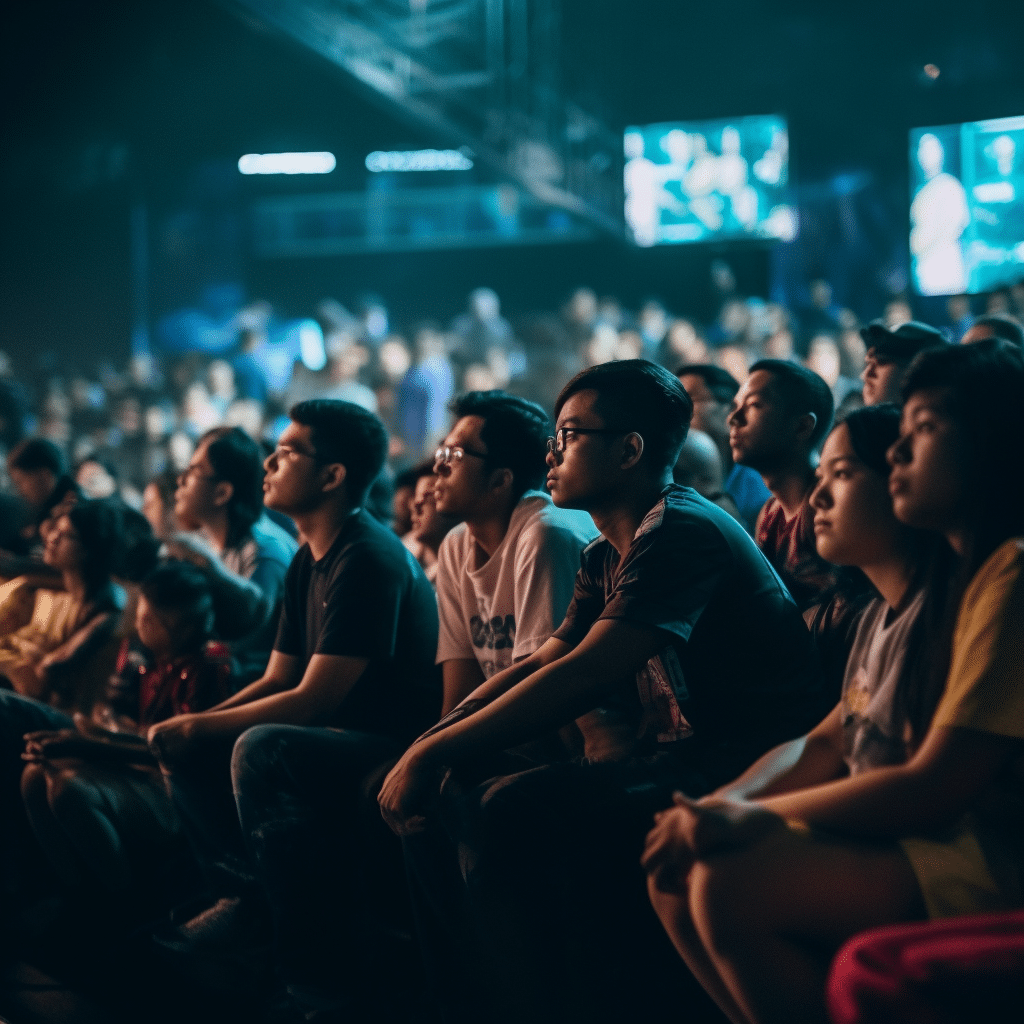The rise of esports have introduced different tournament formats in the competitive scene. Every esports tournament has a distinct set of rules and format. It is usually the tournament organizers that determine the rules and the format of the tournament, and there is no standard set of rules and formats of holding a competition in esports as it exists in traditional sports. This is because every game genre is different from one another.
In this article, we discuss the most commonly used tournament formats in esports and how each format works.
Open or Closed Tournament
An esports tournament can either be open or closed, and it is important to advertise and inform interested teams and players what kind of tournament will be held. Some tournaments require teams to apply and qualify, while some disregard applications entirely.
Open – Any qualified team or player can join. Qualification matches are usually held, and only the top contenders make it to the tournament. An example is the annual tournament for fighting games: Evo.
Closed – The tournament coordinators pick and invite the competitors. There is no other way to join the tournament but to be invited. An example is the annual Mid-Season Invitational for League of Legends: MSI.
Series Types
It is necessary to grasp the idea of “Best of _”. It is shortened to Bo1, Bo3, Bo5, etc. The number refers to how many maps/games needed for the contestants to win. (e.g. A team needs to win 3 times in a Bo5 series.)
- Best of 1 (Bo1) – Teams play a single game against each other. Used almost exclusively during group stages.
- Best of 2 (Bo2) – Teams play two games against each other. Occasionally used in group stages of some esports tournaments, draws are possible in this type of series.
- Best of 3 (Bo3) – More commonly used during knockout stages or playoffs. Sometimes used in group stages depending on a game genre.
- Best of 5 (Bo5) – This series type is used only during knockout stages or playoffs, and in some cases, only in the grand finals.
- Best of 7 (Bo7) – Used almost only in sports. Very rare for esports tournaments to adapt this series type.
Group Stages
Once the competitors have been finalized, a group stage will be held to thin out the competition. This is where teams prove themselves to earn their spot in the playoffs or knockout stage. The common formats for group stages are:
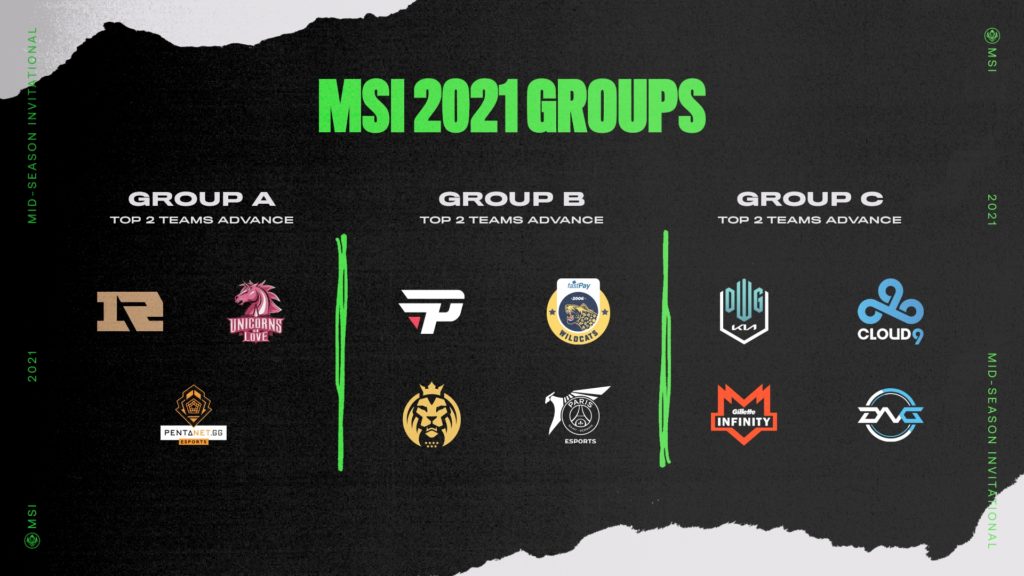
- Round Robin – Teams play against each other once to earn points. The goal is to accumulate a certain amount of points to qualify for the next round. Teams or players that do not earn enough points are eliminated from the tournament. Round Robin stages usually follow a Bo1, Bo2, or Bo3 series format depending on the organizers and game genre.
- Double Round Robin – Same format as Round Robin except the teams play against each other twice. This is the most commonly used format for group stages in esports.
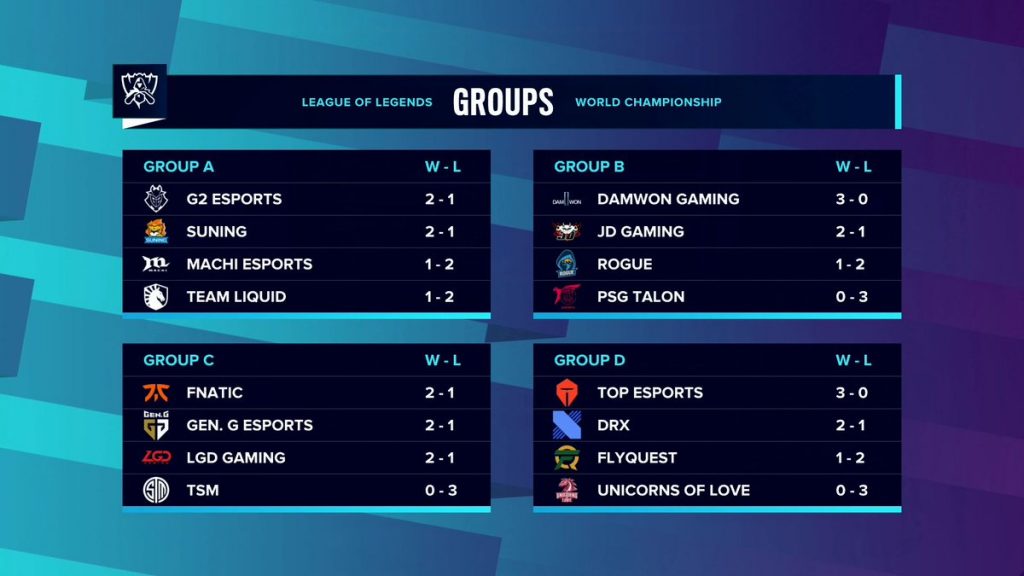
- Swiss Seeding – When a round robin is not possible due to a large number of competitors and time constraints, the Swiss Seeding is used to filter the teams in tournaments. In this format, teams go through several rounds to qualify to the next stage. In the first round, teams are drawn at random or matched up according to the tournament seeding. In the second round, teams that won in the first round will play other teams that won, and the teams that lost will also play other teams that lost. Teams will continue to play teams with the same record for a number of rounds according to the tournament, and the teams that underperformed will be eliminated from the tournament. Swiss Seeding formats usually follow a Bo1 series format.
Playoffs / Knockout Stage
Teams that have qualified for the playoffs will be put into the bracket depending on the team’s performance in the group stages. Regardless of the bracket, seeding is determined by the outcomes of the group stages. A good performance in the group stage can result in easier matchups in the knockout stage. Here are the two kinds of knockout stages that are commonly used in esports tournaments:
- Single Elimination Bracket – This is a straightforward all or nothing format. A team that loses a series gets eliminated, and a team that wins moves forward in the competition. Single Elimination Bracket Stage usually follows a Bo3 or Bo5 series format.
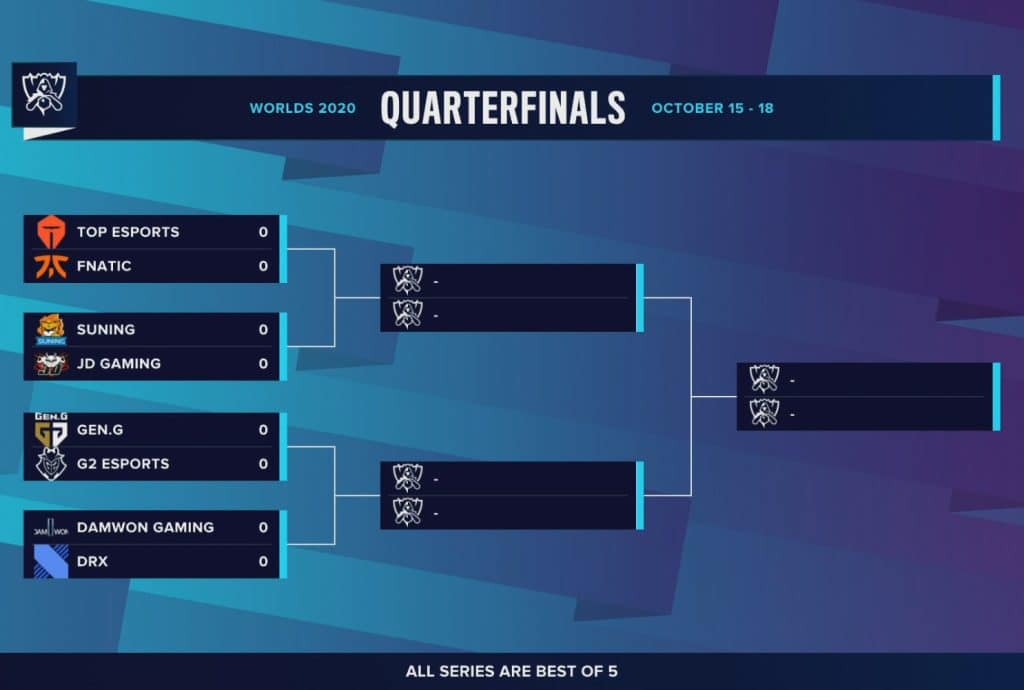
- Double Elimination Bracket – This format follows two brackets to progress towards the grand finals. Teams first play in the upper bracket stage, and the winning team will progress towards the next stage of the tournament, and the losers will fall to the lower bracket, sometimes called the loser’s bracket. Progressing in the lower bracket will still lead toward the grand finals, but a team that loses in the lower bracket gets eliminated from the competition. Teams that are in the lower bracket usually have to win more games than the teams in the upper bracket to get to the grand finals. Double Elimination Brackets usually follow a Bo3 or Bo5 series format.
Bracket Reset: In double elimination brackets, a bracket reset is done when the team from the loser’s bracket beats the team from the winner’s bracket during the Grand Finals. This is because in the Double Elimination Bracket format, teams have to lose twice to get knocked out. The team from the winner’s bracket is practically undefeated up to that point, so they have to lose twice during the Grand Finals to get knocked out, while the team coming from the loser’s bracket can only lose once.
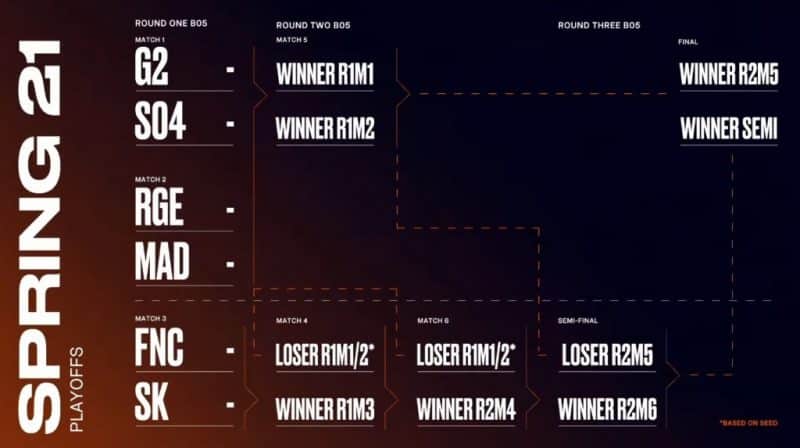
Advanced Seeding
Some tournaments have teams that goes directly to playoffs and bracket eliminations instead of partaking in the group stages or qualifiers. This is because of a team’s accrued points and prestige over the year that was earned through prior tournaments. A good example of a tournament that has advanced seeding is Dota 2’s The International, which invites top teams in their respective regions and hosts qualifiers for teams that were unable to earn the necessary points in the year-long circuit to be invited to the tournament. This format recognizes the teams that have proven themselves over the year while giving underdog teams a chance to earn a spot in the tournament.
Trivia: OG, the 2-time champion of The International, did not receive a direct invite during TI8. They had to go through qualifiers and groups just to get into the tournament, and win through the lower bracket.
Esports tournament formats vary according to the organizers, games, and the teams involved. Good tournament formats allow teams and players to highlight and showcase their skills and is able to create interesting narratives for the audience . One of the most amazing narratives in esports history is OG’s journey to winning TI8.
Did you find the article helpful? Leave a comment or read more articles by us about everything esports! If you’re looking to join tournaments and need guidance, contact us, we might be able to help you!

